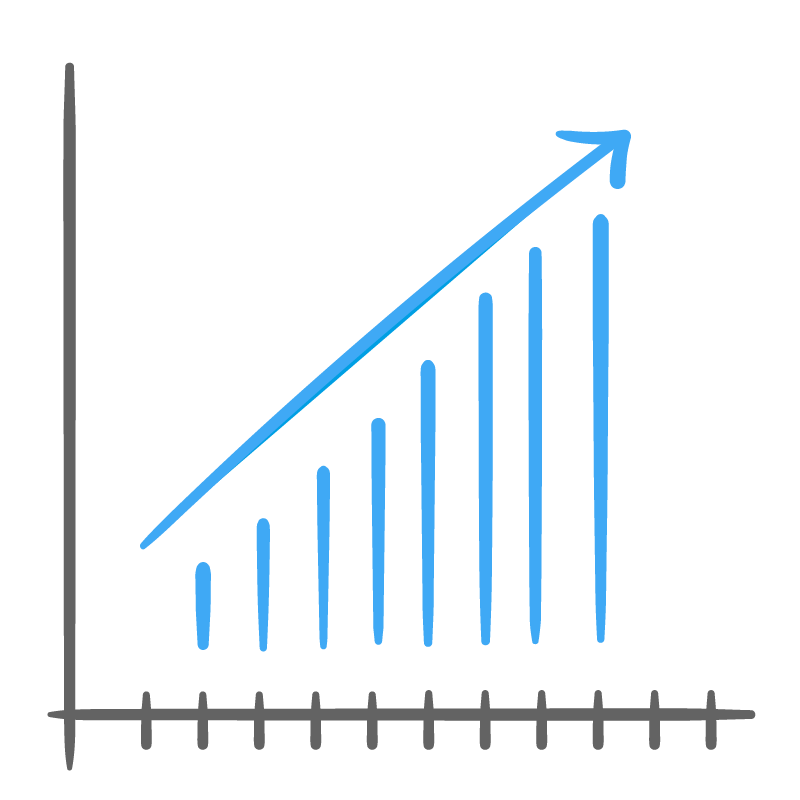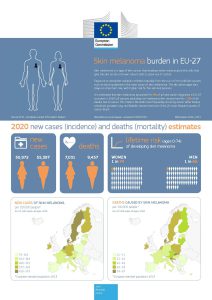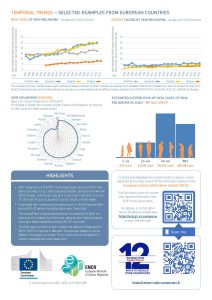Melanoma is a very aggressive type of skin cancer caused by the malignant transformation of melanocytes. It may occur on apparently normal skin or develop from a pre-existing mole. Much less frequently, it may present on the mucous membranes i.e., in the mouth, on the genitals, conjunctiva, or the mucous membrane of internal organs.
Melanoma is one of the most frequent cancers occurring at a relatively young age: more than 50% of incident cases in males in the 0-44 age group are due to 5 cancer sites including melanoma (Dyba T, Randi G, Freddie Bray F, et al. The European cancer burden in 2020: Incidence and mortality estimates for 40 countries and 25 major cancers. Eur J Cancer. 2021 Nov;157:308-347. https://pubmed.ncbi.nlm.nih.gov/34560371/)
It is the second most common type of cancer diagnosed in 15-to-19-year-olds, and the most common form of cancer affecting young adults between the ages of 25 and 29.
Melanoma is the most common cancer diagnosed in young Australians aged 15-29 years, accounting for 15% of all cancers in this age group. (Australian Institute of Health and Welfare).
https://www.aihw.gov.au/reports/cancer/cancer-data-in-australia/contents/summary
Globally from 1990 to 2019, the incident cases of melanoma increased by 170% to 289,950, deaths increased by 90% to 62,840, and DALYs (Disability Adjusted Life Years) increased by 67% to 1,707,800. The age-standardized incidence rate of melanoma increased by an average of 1.13 [95%CI: 0.93–1.32]. In 2019, the highest burden of melanoma was observed in Australasia, followed by high-income North America and Europe regions (Li Z, Fang Y, Hui H, et al. Spatiotemporal trends of the global burden of melanoma in 204 countries and territories from 1990 to 2019: Results from the 2019 global burden of disease study. Neoplasia. 2022 Jan;24(1):12-21. https://pubmed.ncbi.nlm.nih.gov/34872041/
Estimated melanoma incidence rates in 2020 varied six-fold across EU-27, while mortality rates varied three-fold. In Europe, the highest increase (+10% in men and +8.3% in women) was seen in thin-type melanomas (Sacchetto L, Zanetti R, Comber H, et al. Trends in incidence of thick, thin and in situ melanoma in Europe. Eur J Cancer. 2018 Mar.92:108-118. https://pubmed.ncbi.nlm.nih.gov/29395684/ )
For in-depth information on European incidence and mortality data, go to the European Commission website ECIS – European Cancer Information System (https://ecis.jrc.ec.europa.eu/ )
In Europe, skin melanoma is the fifth most diagnosed cancer in both men and women with 106,369 new melanoma cases were diagnosed in 2020 (50,972 men and 55,397 women). Estimates for 2021 are not yet available.
The lifetime risk of developing melanoma is 1 in 74 for women and 1 in 66 for men.
In 2020, 23.2 and 18.2 new cases of melanoma were diagnosed per 100,000 European men and women, respectively. Incidence rates across countries vary greatly, ranging from 2.8 and 1.6 in Albania to 55.4 and 48.6 in Norway, for men and women, respectively.
https://pubmed.ncbi.nlm.nih.gov/34560371/
This epidemiological assessment of global cancer data estimated that 325 000 new melanoma cases and 57 000 deaths due to melanoma occurred in 2020, with large geographic variations in incidence across countries and world regions. The global burden of melanoma is forecast to increase to 510 000 new cases and 96 000 deaths by 2040 (Arnold M, Singh D, Laversanne M, et al. Global Burden of Cutaneous Melanoma in 2020 and Projections to 2040. JAMA Dermatol. 2022 May 1;158(5):495-503. https://pubmed.ncbi.nlm.nih.gov/35353115/
In Europe, skin melanoma is one of 15 most frequent causes of cancer death, in both sexes.
5-year melanoma survival rates exceeded 90% for Nordic or Western countries, but is below 60% in Eastern Europe (Allemani C, Matsuda T, Veronica Di Carlo V, et al. Global surveillance of trends in cancer survival 2000-14 (CONCORD-3): analysis of individual records for 37 513 025 patients diagnosed with one of 18 cancers from 322 population-based registries in 71 countries. Lancet. 2018 Mar 17;391(10125):1023-1075. https://pubmed.ncbi.nlm.nih.gov/29395269/
















